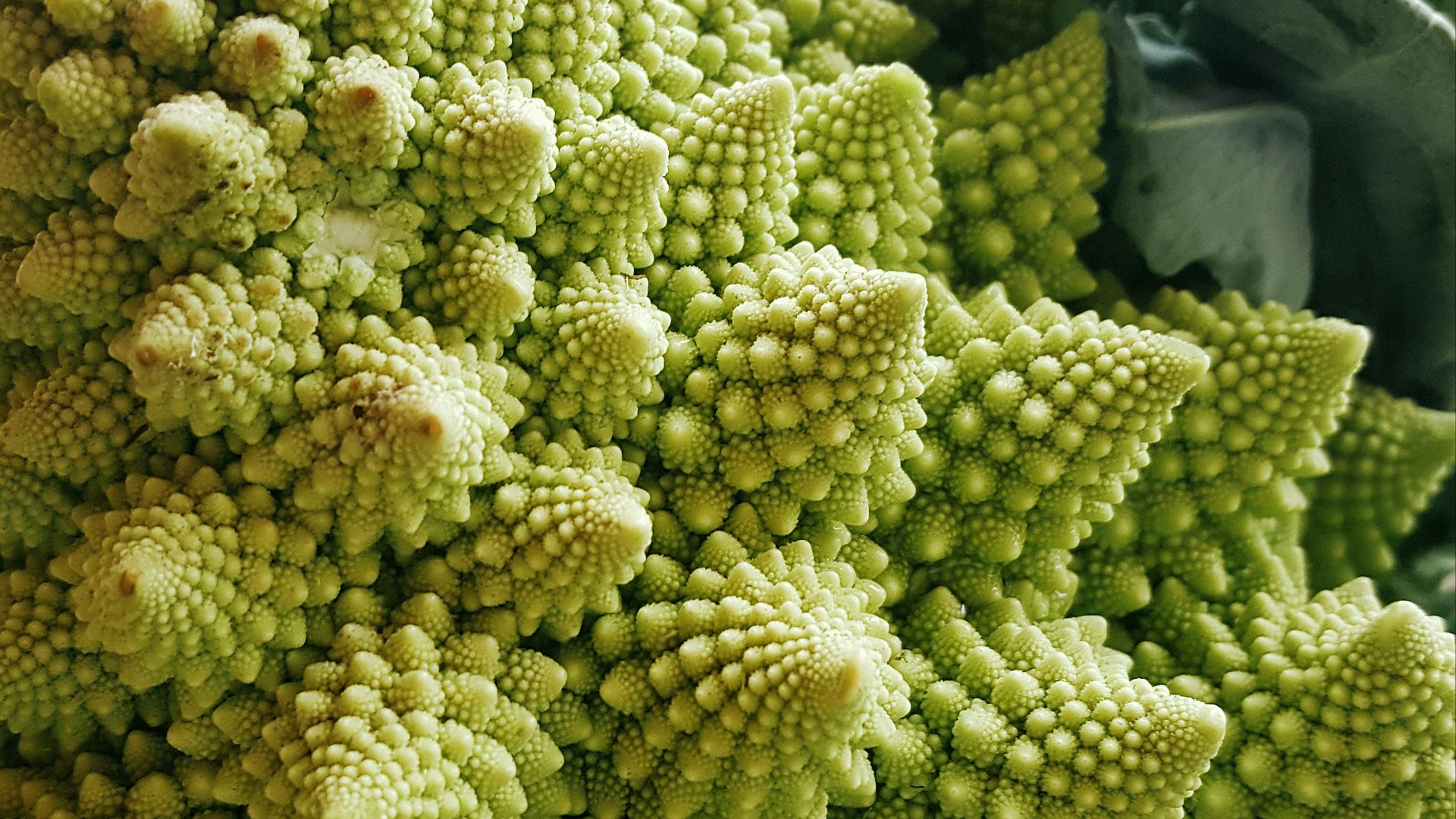The History Of Romanesco—The World's Trippiest-Looking Vegetable
You've probably seen it before at farmers' markets or at restaurants. It's what cauliflower would look like if you just swallowed a handful of magic mushrooms. With its mesmerizing vegetal fractals that look otherworldly, Romanesco is one of those vegetables that stops people in their tracks.
History
Although it looks futuristic, the visually stunning veggie has a surprisingly deep history, stretching back centuries. It's believed to have been first cultivated in the 16th century, close to Rome—hence the name. Early agricultural writings describe it as a variant of cauliflower, though with a firmer texture and a more delicate, nutty flavor.
Those characteristic fractal patterns were naturally occurring mutations, made up of buds that built over and over each other but failed to bloom. Farmers in the Lazio region loved the aesthetic and started selectively breeding crops to achieve the coveted geometric formations, refining the vegetable over generations. In the days before genetics were well understood, this was an impressive feat, requiring immense patience and skill. Romanesco eventually spread through Europe, though it remained mostly a specialty crop until the 20th century.
Fractal structure
Romanesco's striking fractal structure is formed by a visual phenomenon known as self-similarity. While all cauliflower and broccoli contain traces of fractal patterning, Romanesco displays it with exceptional clarity. Scientists and mathematicians have long been intrigued by this vegetable, using it as a real-world example of mathematical principles seen in nature.
Its perfect spirals follow the Fibonacci sequence, where each number is the sum of the two preceding ones. The same pattern is seen in shells, pinecones, fern leaves, snowflakes, and galaxies.
Romanesco only became well-known globally in the late 20th century when chefs and home cooks became more adventurous and began seeking out unique produce. Farmers’ markets, high-end grocery stores, and restaurant kitchens embraced it for both its aesthetic appeal and its flavor.
Uses
Romanesco is incredibly versatile in the kitchen, and its mild, nutty, slightly earthy taste makes it easy to use in many of the same ways as cauliflower or broccoli—just with a more striking presentation.
It holds its shape better than cauliflower, making it ideal for roasting, grilling, or presenting whole as a head-turning centerpiece. It pairs well with Mediterranean staples like lemon, olive oil, garlic, and anchovy.
Romanesco works wonderfully in pasta dishes, either roasted and tossed with olive oil, anchovies, chili flakes, and breadcrumbs, or folded into creamy sauces for extra texture. It also stands up well in hearty dishes like Indian curries, Thai green curry, or Mediterranean stews because it absorbs spices without turning mushy.
Chefs often use Romanesco simply because it looks so incredible, so they'll place small florets as garnish to add visual intrigue to a dish.
Is it healthy?
Romanesco isn't all style and no substance. It's one of the most nutrient-dense vegetables in the entire brassica family. It's higher in vitamin C and carotenoids than broccoli, is packed with B vitamins, fiber, antioxidants, and minerals like iron, magnesium, and potassium.
Romanesco may be the trippiest-looking vegetable on Earth, but it’s much more than a visual novelty. It's a centuries-old feat of agriculture, a versatile culinary treasure, and a nutritional powerhouse.
KEEP ON READING

The Surprising Health Benefits Of Popcorn

Why You Should Stop Rinsing Rice

We Need To Bring Back The Mystery Dinner Party






